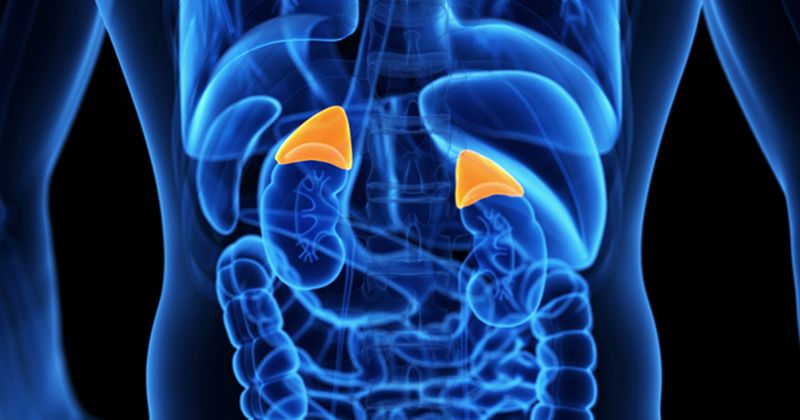Free cortisol evaluation ‘useful’ after abnormal dexamethasone test
An assessment of free cortisol after a dexamethasone suppression test could add value to the diagnostic workup of hypercortisolism, which can be plagued by false-positive results, according to data from a cross-sectional study.
A 1 mg dexamethasone suppression test (DST) is a standard of care endocrine test for evaluation of adrenal masses and for patients suspected to have endogenous Cushing’s syndrome. Interpretation of a DST is affected by dexamethasone absorption and metabolism; several studies suggest a rate of 6% to 20% of false-positive results because of inadequate dexamethasone concentrations or differences in the proportion of cortisol bound to corticosteroid-binding globulin affecting total cortisol concentrations.

“As the prevalence of adrenal adenomas is around 5% to 7% in adults undergoing an abdominal CT scan, it is important to accurately interpret the DST,” Irina Bancos, MD, associate professor in the division of endocrinology at Mayo Clinic in Rochester, Minnesota, told Healio. “False-positive DST results are common, around 15% of cases, and as such, additional or second-line testing is often considered by physicians, including measuring dexamethasone concentrations at the time of the DST, repeating DST or performing DST with a higher dose of dexamethasone. We hypothesized that free cortisol measurements during the DST will be more accurate than total cortisol measurements, especially among those treated with oral contraceptive therapy.”
Diverse cohort analyzed
Bancos and colleagues analyzed data from adult volunteers without adrenal disorders (n = 168; 47 women on oral contraceptive therapy) and participants undergoing evaluation for hypercortisolism (n = 196; 16 women on oral contraceptives). The researchers assessed levels of post-DST dexamethasone and free cortisol, using mass spectrometry, and total cortisol, via immunoassay. The primary outcome was a reference range for post-DST free cortisol levels and the diagnostic accuracy of post-DST total cortisol level.

“A group that presents a particular challenge are women treated with oral estrogen,” Bancos told Healio. “In these cases, total cortisol increases due to estrogen-stimulated cortisol-binding globulin production, potentially leading to false-positive DST results. We intentionally designed our study to include a large reference group of women treated with oral contraceptive therapy allowing us to develop normal ranges of post-DST total and free cortisol, and then apply these cutoffs to the clinical practice.”
Researchers observed adequate dexamethasone concentrations ( 0.1 µg/dL) in 97.6% of healthy volunteers and in 96.3% of patients. Among women volunteers taking oral contraceptives, 25.5% had an abnormal post-DST total cortisol measurement, defined as a cortisol level of at least 1.8 µg/dL.
Among healthy volunteers, the upper post-DST free cortisol range was 48 ng/dL in men and women not taking oral contraceptives, and 79 ng/dL for women taking oral contraceptives.
Compared with post-DST free cortisol, diagnostic accuracy of post-DST total cortisol level was 87.3% (95% CI, 81.7-91.7). All false-positive results occurred among patients with a post-DST cortisol level between 1.8 µg/dL and 5 µg/dL, according to researchers.
Oral contraceptive use was the only factor associated with false-positive results (21.1% vs. 4.9%; P = .02).
Findings challenge guidelines

“We were surprised by several findings of our study,” Natalia Genere, MD, instructor in medicine in the division of endocrinology, metabolism and lipid research at Washington University School of Medicine in St. Louis, told Healio. “First, we saw that with a standardized patient instruction on DST, we found that optimal dexamethasone concentrations were reached in a higher proportion of patients than previously reported (97%), suggesting that rapid metabolism or poor absorption of dexamethasone may play a lower role in the rate of false positives. Second, we found that measurements of post-DST total cortisol in women taking oral contraceptive therapy accurately excluded [mild autonomous cortisol secretion] in three-quarters of patients, suggesting discontinuation of oral contraceptives, as suggested in prior guidelines, may not be routinely necessary.”
Genere said post-DST free cortisol performed “much better” than total cortisol among women treated with oral estrogen.
Stepwise approach recommended
Based on the findings, the authors suggested a sequential approach to dexamethasone suppression in clinical practice.
“We recommend a stepwise approach to enhance DST interpretation, with the addition of dexamethasone concentration and/or free cortisol in cases of abnormal post-DST total cortisol,” Bancos said. “We found dexamethasone concentrations are particularly helpful when post-DST total cortisol is at least 5 µg/dL and free cortisol is helpful in a patient with optimal dexamethasone concentrations and a post-DST total cortisol between 1.8 µg/dL and 5 µg/dL. We believe that DST with free cortisol is a useful addition to the repertoire of available testing for [mild autonomous cortisol secretion], and that its use reduces need for repetitive assessments and patient burden of care, especially in women treated with oral contraceptive therapy.”

